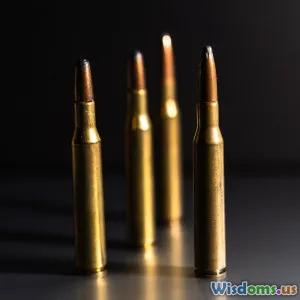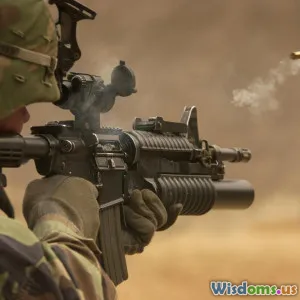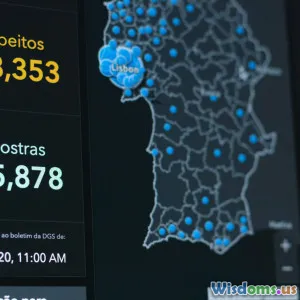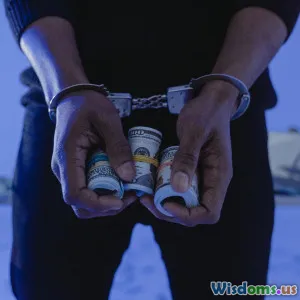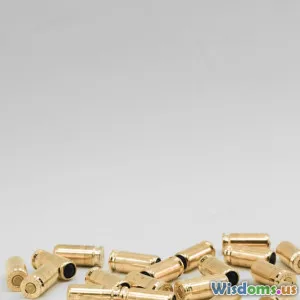
The Art and Science of Matching Firearms to Spent Cartridges
8 min read Explore how forensic experts match firearms to spent cartridges, blending art and science for crime-solving precision. (0 Reviews)
The Art and Science of Matching Firearms to Spent Cartridges
Every bullet fired leaves behind a hidden signature—akin to a fingerprint—that forensic experts painstakingly decode to link spent cartridges to the firearm that discharged them. This subtle nexus between ballistics and forensic science not only unravels complex criminal mysteries but exemplifies how microscopic details shape justice. Let's embark on an illuminating journey into the craft, challenges, and cutting-edge science involved in matching firearms to spent cartridges.
Introduction: Firearm Matching – More Than Just Identification
In crime scenes saturated with chaos, spent cartridges provide vital clues, silently bearing identifiers of the weapon used. While televisions depict this process as a quick match of bullets to guns, the reality intertwines precision science with nuanced interpretation. The intricate patterns on cartridges and bullets, influenced by firearm mechanics, offer unique signatures that experts analyze meticulously.
Understanding this process is essential not only for law enforcement but also for anyone intrigued by forensic science. By dissecting the art and science behind matching firearms to spent cartridges, this article sheds light on a discipline where technology meets keen human judgment.
The Science Behind Cartridge Signatures
How a Firearm Imprints on a Cartridge
A cartridge comprises the casing, primer, powder, and bullet. Upon firing, the firing pin strikes the primer, igniting the powder, creating gas pressure that propels the bullet through the barrel. Meanwhile, the spent casing is ejected. This dynamic process leaves several distinct markings:
- Firing Pin Impressions: The firing pin leaves a unique indentation on the primer of the cartridge. Variations depend on the shape and wear of the firing pin.
- Breechface Marks: The breechface, the part of the firearm that holds the cartridge at firing, leaves striations and marks on the cartridge base due to metal-to-metal contact.
- Extractor and Ejector Marks: As the spent casing is removed, specific components scrape and press against it, generating additional unique impressions.
These microscopic marks serve as critical identifiers akin to a forensic signature.
Ballistics Microscopy: The Core Tool
In ballistic forensics, comparison microscopes allow examiners to view two cartridges side-by-side under high magnifications. This helps detect corresponding striations and impressions.
According to Dr. Cyril H. Wecht, a renowned forensic pathologist, "No two firearms produce exactly the same markings on cartridge cases, akin to a fingerprint or handwriting. This uniqueness enables confident firearm identification."
The Artistry of Firearms Identification
Expertise Beyond Technology
While advanced imaging and databases such as the National Integrated Ballistic Information Network (NIBIN) support identification, human expertise remains pivotal. Experienced examiners interpret patterns holistically, considering variations arising from:
- Wear and tear of firearm components
- Manufacturing nuances
- Environmental factors affecting cartridges
This interpretative skill is sometimes referred to as the "art" aspect — the subtle judgment calls that no computer algorithm can perfectly replicate.
Case Example: The Prestige of Expert Testimony
In the 1990s Beltway sniper case, definitive matches of spent cartridges linked an illicit weapon to multiple crime scenes. Expert testimony on microscopic cartridge markings was pivotal in securing convictions. This case highlighted the necessity of combine scientific rigor with experienced evaluation.
Technological Innovations Enhancing Matching Accuracy
Automated Ballistic Identification Systems
Databases like NIBIN in the United States enable law enforcement agencies to upload images of ballistic evidence, facilitating cross-jurisdictional matches. NIBIN uses image-processing algorithms to flag potential match candidates rapidly, expediting investigations.
3D Imaging and Artificial Intelligence
Modern systems now utilize 3D topographical imaging to capture bullet and cartridge surface profiles with greater detail than traditional microscopy. AI-driven analysis sorts patterns, drastically reducing false positives and enhancing match reliability.
Companies like Evofinder are pioneering such solutions, capable of scanning casings and bullets with remarkable speed and precision.
Limitations and Challenges
Despite technological advancements, challenges persist:
- Damaged or deformed cartridges may obscure markings.
- Some firearms possess less distinctive markings, complicating discrimination.
- False positives can occur, necessitating confirmatory expert review.
Hence, technology supplements, but does not replace, expert interpretation.
Real-World Implications and Legal Impact
Crime Resolution Through Cartridge Matching
Linking spent cartridges to a known firearm can corroborate suspect involvement or eliminate persons of interest. For instance, matching a cartridge found at a crime scene to a recovered gun can direct investigative resources efficiently.
In one study spanning 2015 to 2019, the use of ballistic matching shortened investigation times by an average of 30%, showcasing its operational value.
Courtroom Acceptance and Challenges
Courts often scrutinize the reliability of firearm and cartridge matching, given its range of subjective interpretation. Standards and protocols, such as those from the Association of Firearm and Tool Mark Examiners (AFTE), aim to ensure consistency.
Experts must present findings clearly and acknowledge uncertainties, ensuring juries understand the evidentiary strength and limitations.
Conclusion: Bridging Science and Intuition in Forensics
Matching firearms to spent cartridges epitomizes a sophisticated intersection between methodical science and forensic artistry. It demands cutting-edge technology, rigorous procedures, and seasoned analytical judgment.
This synergy not only accelerates crime solving but reinforces the bedrock of judicial correctness. As innovations continue to evolve — from AI to 3D imaging — the precision and speed of ballistic matching will enhance profoundly. Yet, the cornerstone remains human expertise, interpreting the language of metal marks to tell stories that uphold justice.
For those passionate about forensic science or criminal investigation, appreciating this art and science reveals the meticulous care undergirding law enforcement’s pursuit of truth.
References & Further Reading:
- Association of Firearm and Tool Mark Examiners (AFTE): https://afte.org
- Federal Bureau of Investigation - National Integrated Ballistic Information Network (NIBIN): https://www.fbi.gov/services/laboratory/biometric-analysis/cjis/nibin
- Scientific American: "Ballistics: Gun Forensics Gets a High-Tech Upgrade" (2021)
- Wecht, Cyril H. "Forensic Science and Firearm Identification", Journal of Forensic Sciences, 2010.
Rate the Post
User Reviews
Other posts in Forensic Science
Popular Posts










